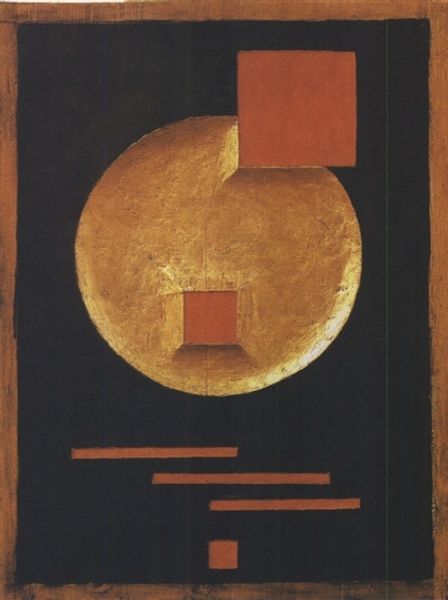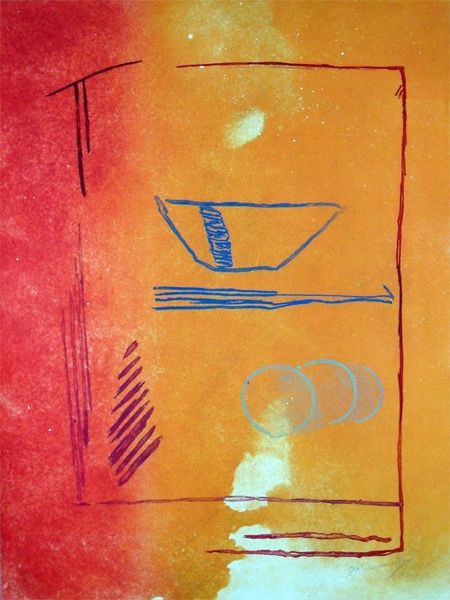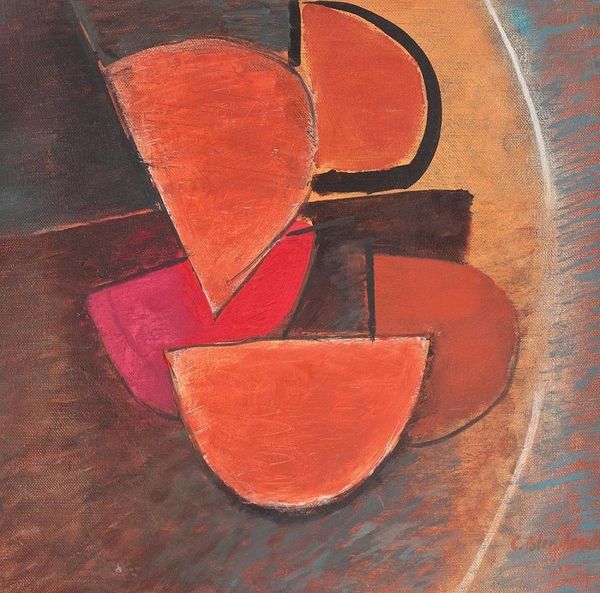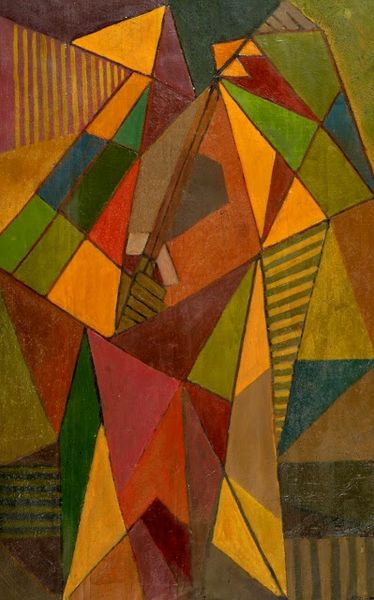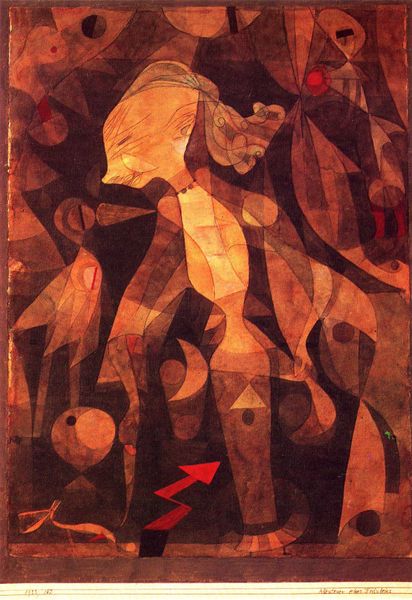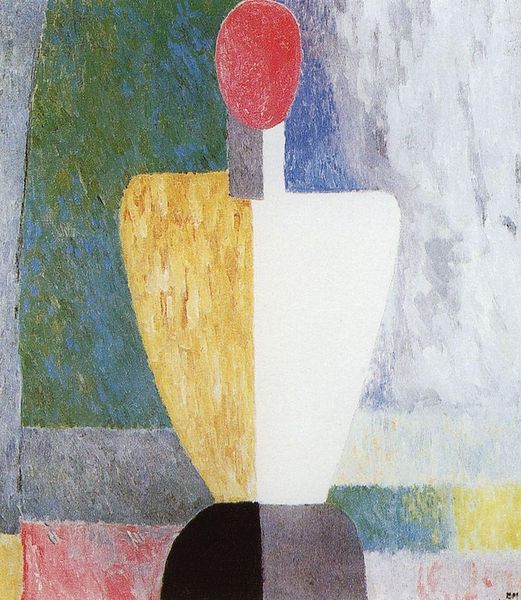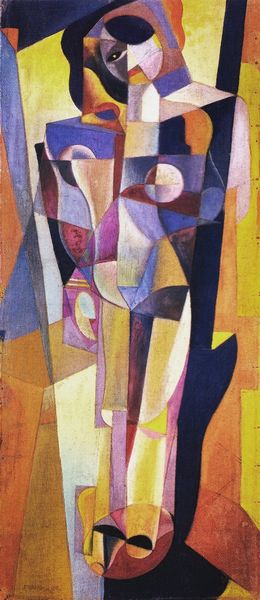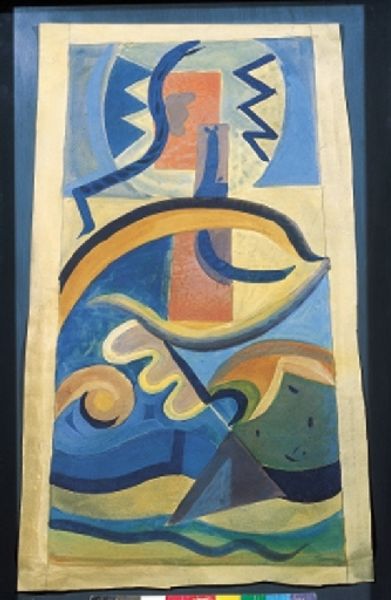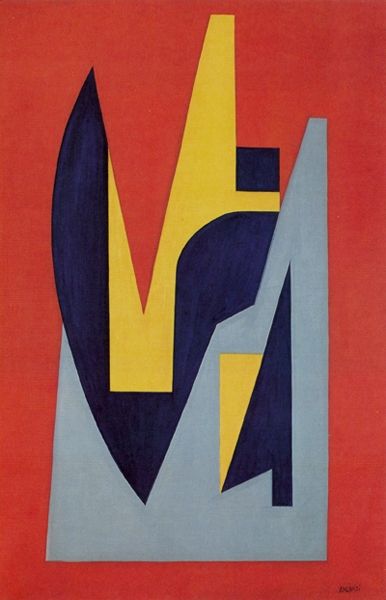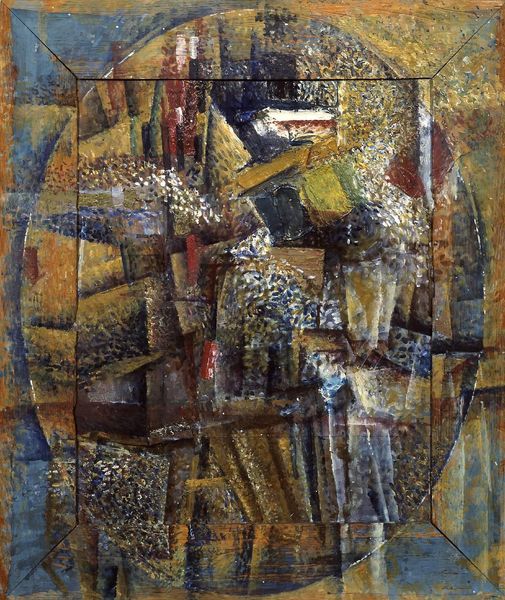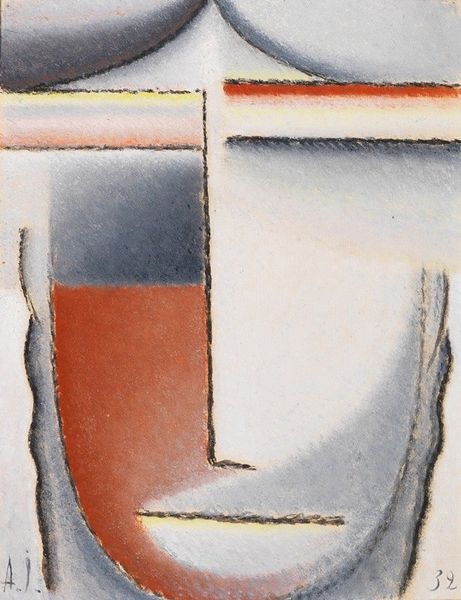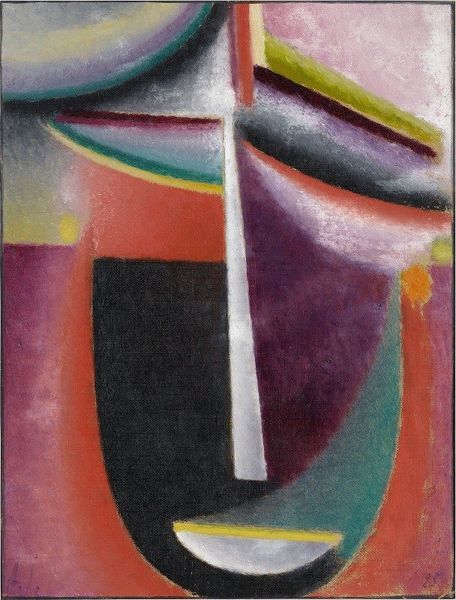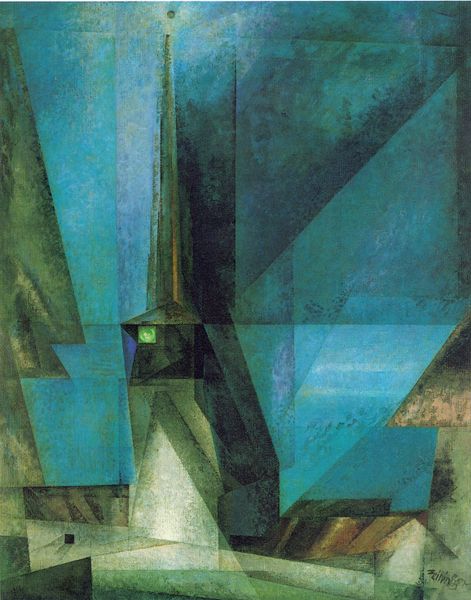
oil-paint
#
cubism
#
abstract painting
#
oil-paint
#
constructivism
#
painted
#
form
#
geometric-abstraction
#
abstraction
#
line
#
russian-avant-garde
#
modernism
Dimensions: 73 x 32 cm
Copyright: Public domain US
Curator: So, here we have Alexander Rodchenko's "Construction," an oil on canvas, created in 1917. It's an excellent example of his early exploration of abstract forms, just before the full bloom of Constructivism. What's your immediate take on it? Editor: Woah, cosmic! It's like a primordial soup of geometric shapes—planets aligning, or maybe some sort of early blueprint for a utopian city, dreamt up on another world. Stark, but somehow soothing. Curator: That's a very evocative reading. Rodchenko was indeed engaging with the concept of utopia, but in a very material, this-worldly sense. He was influenced by the Russian Revolution's call to dismantle old forms, so he started breaking down painting into its core components: color, line, and form, thinking about how these could be used to construct something new. Editor: Which I guess would make the geometric shapes the "raw materials," eh? And I have to say, there's an urgency to it. The colors—brown, blue, ochre, red—they are simple, earthy, yet the dynamic composition shoots upwards. It wants to take off! Curator: Precisely. You have this dark vertical element rising centrally. Rodchenko explored how these simple elements could convey movement and space. The fact it emerged in 1917 is no coincidence. It coincided with this fervour, an explosion of ideas which art reflected. Think how revolutionary it was for painting to completely reject representation like this. Editor: You can feel that revolutionary energy. What strikes me too, are the overlaps. Like life itself, one thing obscuring another, one form creating the possibility for a new, or cancelling out an existing one. Nothing stands still. Does this speak to a "higher plane of reality" kind of stuff? Curator: You’re on to something there. Although Rodchenko ultimately abandoned pure abstraction for more practical applications, like graphic design and propaganda, his early abstract paintings reflect a search for a universal language through pure form. Art was becoming increasingly democratized as it entered social spaces beyond galleries. It's interesting how one period triggers unexpected consequences. Editor: Mmm, I hear you. From revolutionary zeal to toothpaste ads—there's a thought! But seriously, stepping back, there's something almost playful about this piece. It makes me feel like I could rearrange these elements to build my own reality, maybe with fewer rectangles and a little more cosmic goo. Curator: Indeed, a call to creation itself! Ultimately, "Construction" stands as a pivotal moment, illustrating the possibilities available for art within modernism. Editor: Yep, Rodchenko certainly managed to trigger some "primordial soup" vibes in my old artistic head. Art can indeed bring life through abstract thoughts!
Comments
No comments
Be the first to comment and join the conversation on the ultimate creative platform.
